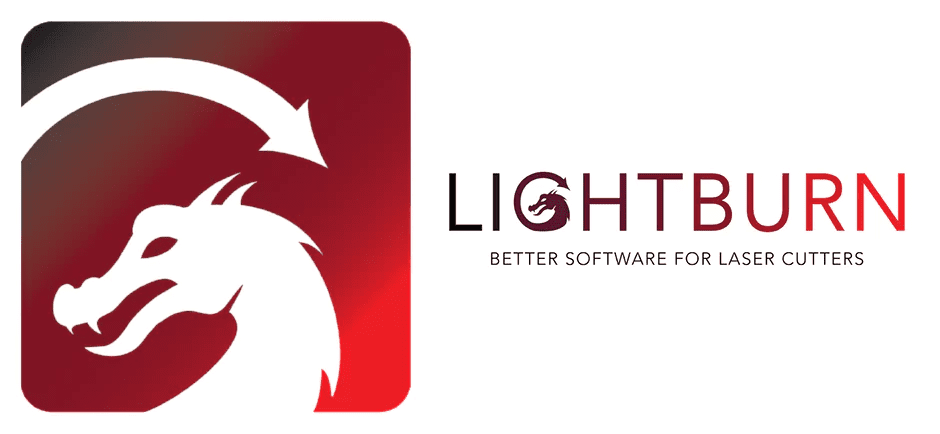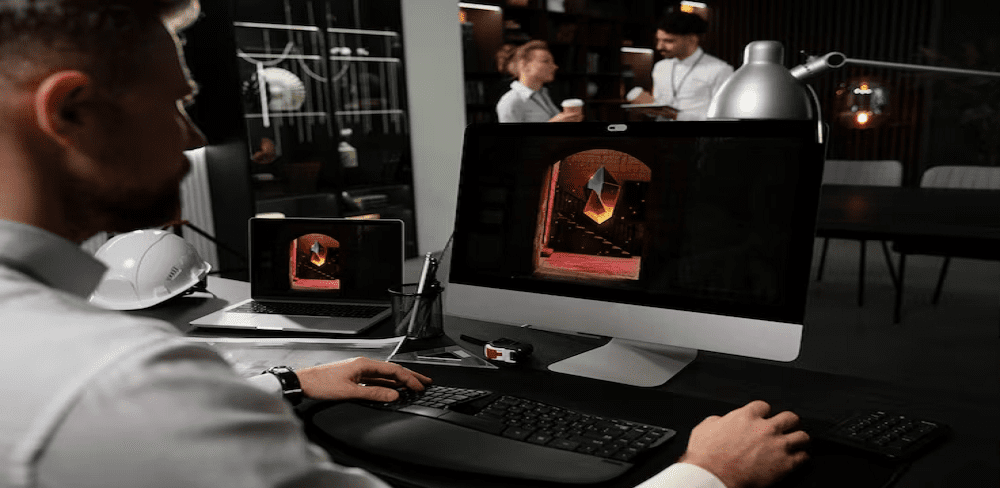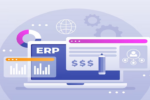LightBurn is a powerful laser engraving and cutting software that allows professionals, amateurs and artisans to maximize the potential of their laser machines. While the benefits of such a sophisticated tool are indisputable, it is important to consider the investment needed for its development.
This blog post will explore the costs associated with LightBurn software development. The meticulous coding, robust feature implementation, and ongoing maintenance and support are all aspects of this versatile software that require a strategic allocation.
Understanding the factors that influence development costs can help individuals and businesses gain valuable insight into the investment needed to take advantage of the seamless precision and creativeness that LightBurn provides.
Let’s get started.
What is Lightburn Software?

Lightburn Software is an extremely popular computer program designed to control and manage laser cutters, engravers, and similar devices. It has a simple interface with comprehensive tools for creating, importing, and modifying designs. You can also control laser equipment to achieve precise cutting and engraving.
Lightburn is compatible with a variety of file formats including SVG and AI. It also supports BMP, JPG, and BMP. Users may use the built-in tools to generate their own designs or import designs from other applications. Features include text editing, shape creation, image tracing, and node editing.
Lightburn’s ability to control the laser settings and parameters, including power, speed, and focus to achieve desired results on various materials, is one of its key advantages. The software allows users to see a live preview of their design, and adjust parameters and settings accordingly.
Lightburn works with a variety of laser cutters and engravers, including diode, fiber, and CO2 lasers. It is suitable for both professionals and hobbyists. It supports laser hardware from popular brands such as Boss Lasers, Thunder Lasers, Epilogs, Trotecs, and others.
How Does Lightburn Software Work?
Lightburn Software is a computer software that allows laser cutters and engravers to be controlled and managed. Lightburn Software connects to laser hardware via a compatible interface such as USB or Ethernet.
Lightburn’s user-friendly interface allows users to create or import design files using the built-in tools. The software supports a wide range of file types to provide designers freedom.
The user can then modify and manipulate the design by using tools like image tracing and text editing. Lightburn allows users to see how the design will look when it is engraved or cut.
Lightburn allows users to adjust parameters like power, speed and focus in order to get the desired result on different materials. It offers options to optimize cutting paths and adjust the cutting order.
Lightburn will send commands to the laser to perform the engraving or cutting once the design and settings have been finalized. The software is in constant communication with the laser, which allows for precise control of the laser output and movements.
Why is Lightburn Software so Popular?
LightBurn has become popular for many reasons.
User-Friendly Interface: LightBurn has a user-friendly and intuitive interface that is accessible to both novices and experts. The layout and design of the software make it simple to use and navigate.
Comprehensive Features: LightBurn offers a variety of features to meet the needs of laser engraving and cutting. It offers both vector and raster engraving, and advanced editing tools, and allows precise control of parameters like power and speed. LightBurn has features such as image tracing and camera alignment. It also supports multi-pass engraving.
Cross-Platform Compatibility: LightBurn has cross-platform compatibility with Windows, macOS, and Linux. Cross-platform compatibility lets users choose the operating system they prefer without restrictions.
Continuous Development and Support: LightBurn’s development team is constantly listening to feedback from users and releases regular updates to improve the software. The company offers prompt customer service and has a vibrant user community that allows users to seek help, exchange knowledge and ideas.
Integration with Various Laser Machines: Integration with Different Laser Machines: LightBurn is compatible with a variety of laser cutters and engravers from different manufacturers. This makes it a fantastic option for people that use many devices or transfer between them frequently. This compatibility eliminates multiple software programs and streamlines workflow.
Top Alternatives of Lightburn Software
1. DraftSight Premium
DraftSight Premium offers powerful 3D features and is cost-effective. It enables companies to fulfill criteria for manufacturing, drawing, and laser cutting. Professionals that wish to go from 2D to 3D drawing and synchronize other applications and services rely on this all-in-one package. This solution includes all of the features in DraftSight Professional along with advanced 3D capabilities.
The software also integrates with popular tools and software like SOLIDWORKS PDM, 3DEXPERIENCE, and others to facilitate collaboration and management of design files. This includes everything from prototyping to modeling. The software offers a variety of features, including 3D modeling. By doing so, you may transform 2D solids into 3D forms. You can download the converted shapes in sat and STL format, or you can print them or use them in 3D solutions.
2. TurboCAD
TurboCAD is an application with multilingual capabilities that allows designers, engineers, manufacturers, and creators to create beautiful projects. Both Mac OSX and Microsoft Windows may use the app without any issues. The platform offers different editions with different prices depending on features.
The Pro Basic or Platinum versions for Windows are available for purchase and include potent tools for 3D mechanical and architectural design. These versions are comparable in that they both let users generate ACIS Solids, Surface Meshes, and TC Surface Objects (surface meshes). The quantity of tools is the primary distinction between the Basic Edition and the Platinum Edition. For customers who primarily use it for mechanical and architectural jobs, Platinum Edition is the best choice.
3. LaserGRBL
LaserGRBL is a free, open-source GCode streamer that was developed in C#. It has several prominent features, including processing and streaming Gcode to Arduino. Users may engrave photos, logos, and photographs with its fully functional converter.
LaserGRBL, unlike similar GUI applications, is optimized for laser cutters and engravers. For the full potential of LaserGRBL, you must use an engraver with power modulation through S command instructions. LaserGRBL is a powerful alternative to tools such as T2laser pic-engrave and Benbox.
It provides several characteristics that customers require in order to suit their demands. It is able to process GCOde and job previews. It can be used to jog for all Grbl versions and has a variety of color schemes that are compatible with multiple safety lenses. LaserGRBL’s intuitive GUI allows users to override Speed and Power.
4. LaserWeb
Users may connect and operate their CNC machines and lasers using the program LaserWeb. This is a fantastic way to create GCODE files from Bitmaps, SVG, Bitmaps, DXF, and JPG for CNC & Lasers. Microsoft Windows and Linux have distinct installations available from LaserWeb.
The extensive Documentation section provides users with information on Compatibility and Installation, Initial Configuration, and Troubleshooting. The platform provides a number of videos that allow users to become familiar with the features and capabilities, as well as apply them to their projects.
Features of Lightburn Software
LightBurn offers a variety of features to help users create, edit and control laser engraving and cutting projects. Here are some of the key features of LightBurn.
- Design Tools: The software comes with a number of design tools, including shape creation, text editing, image tracing, and node editing. Users can import files from other formats such as SVG, DXF, and AI.
- Layer Control: LightBurn’s Layer Control allows you to create complex designs by working with multiple layers. Each layer has its own settings for engraving, cutting, and other operations.
- Image Processing and Editing: LightBurn allows users to edit images, change image properties such as brightness, contrast, and gamma and perform operations such as cropping, resizing, and mirroring.
- Material Library: LightBurn comes with a Material Library that includes predefined settings for various materials. These settings can easily be saved and customized to ensure optimal laser parameters.
- Cut Optimization: This software offers tools to optimize cutting paths, minimize travel time and reduce material waste. Users can place objects on their workspace, prioritize cutting and perform automatic optimization.
- Preview and Simulation: LightBurn’s preview and simulation feature allows users to see the cutting or engraving job in real-time before it is sent to the machine. This allows for the identification of any errors or potential problems.
- Machine Control: LightBurn is compatible with a variety of laser controllers, including models such as Ruida Trocen GRBL and others. It allows you to control laser power, speed, and other parameters. You can also jog the head of the laser and perform manual tasks.
- Camera Alignment: LightBurn allows the use of cameras to align and position designs precisely on materials. Users can take a picture of their workspace and then overlay the design to ensure accurate placement.
What are the Benefits of Lightburn Software?
LightBurn offers many benefits to users who are involved in laser engraving and cutting projects. LightBurn offers several benefits to users.
- LightBurn is easy to use: It has a friendly interface with intuitive tools. This makes it suitable for both novices and experts. The software’s simple features and streamlined workflow contribute to an efficient and smooth user experience.
- Versatility: LightBurn is compatible with various laser machines, controllers, and popular models such as Ruida Trocen and GRBL. The versatility of LightBurn allows users to manage and control different types of laser equipment using a single software platform.
- Design Flexibility: LightBurn offers users a wide range of design tools, including shape creation, text editing, image tracing, and node editing. They can create complex designs, import files of different formats, and customize their designs.
- Material Optimization: LightBurn has a library of materials with preset settings for each material. These settings can be customized and saved by the user to ensure optimal laser parameters. This feature reduces waste, optimizes cutting paths, enhances overall efficiency, and helps to improve overall efficiency.
- Real-time Preview and Simulation: LightBurn’s Real-time Preview allows users to see the laser job in real time before it is sent to the machine. This feature allows users to identify any possible issues or errors and saves time and material.
- Camera Alignment: LightBurn can be used with cameras to align and position designs precisely on materials. Users can take a picture of their workspace and then overlay the design to ensure accurate placement.
What are the Drawbacks of Lightburn Software?
LightBurn, despite its user-friendly interface and versatility, has some potential downsides. Note that some of these problems may have been resolved by software updates or improvements since then. Here are some possible LightBurn drawbacks:
- Limited Compatibility: LightBurn has limited compatibility. It is designed to work primarily with CO2 lasers and may not fully be compatible with all laser engraving and cutting devices. LightBurn can have compatibility issues with certain laser machine models and brands, which may require additional configurations or workarounds.
- Learning Curve: Although LightBurn is designed to be user-friendly, it may take some time to master the software. This is especially true for those who are just getting started with laser engraving and cutting. There are also tutorials and documentation to help users get started.
- Lack of Advanced Features: LightBurn may lack advanced features. It offers many features that are suitable for laser cutting and engraving but does not offer some of the more sophisticated capabilities available in other professional software. Depending on their unique demands, users might not find some capabilities or adjustments accessible.
- Limited File Compatibility: LightBurn may only support certain file types. It can be a problem if you work frequently with file formats not supported by LightBurn.
- Cost: LightBurn costs money, which may be an issue for some users. The pricing structure and plans are subject to change, so you should check the LightBurn site for the most recent information to see if it fits your budget.
What is the Cost to Develop a Lightburn Software?
The cost of creating software like LightBurn varies greatly based on a variety of variables. These include the complexity of features and development time. They also depend on team size and location. A software of LightBurn’s size typically requires a team of developers, testers, and designers to work together in order to create an intuitive and robust product.
The cost of development includes a variety of aspects, such as the initial planning, design, and coding phases, testing, and ongoing support. The cost of development may include third-party tools or libraries, infrastructure hardware and software, and licensing fees.
The cost of development is high due to the complexity of LightBurn and the functionality it offers, as well as the constant updates and improvements that are required to keep pace with the evolving laser technology. The cost of development can range from thousands to hundreds or thousands of dollars, depending on your specific needs and the scope of the project.
Note that these are only general estimates, and actual costs can vary widely depending on a variety of factors. It is best to consult a software company or professional who can provide you with an accurate estimate.
Conclusion
In conclusion, the development cost of Lightburn Software depends on various factors such as the complexity of features, the development team’s rates, and the project timeline. Custom software development can be a significant investment, but it offers the advantage of tailored solutions to meet specific needs. Careful consideration of requirements and effective project management can help optimize costs and deliver a high-quality software product.









